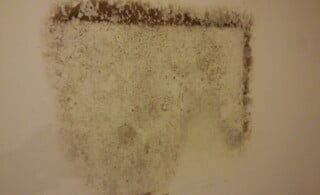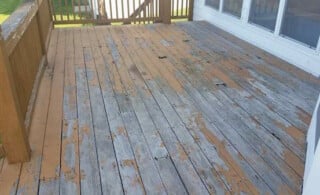A do-it-yourself home renovation project is one of the best ways to spend an afternoon — or a slew of them. While you can hire a handyman to help you with small- or large-scale projects, the prospect of putting sweat equity into your home is exciting. From repainting a few walls to building a new backyard landscape, working in and around your house gives you an unmatched sense of pride and accomplishment, a cool conversation starter, and a great workout. Just don’t forget the aches and pains that come with the job!
That’s right. DIY injuries and their symptoms range from minor soreness to serious suffering, and they aren’t uncommon. So, are there things you can do when that post-project ache is a little more intense than usual? Better yet, is there anything you can do to prevent the pain altogether? The answer to both of these questions is yes!
Massage therapy, when done by a trained and qualified professional, can not only help alleviate the pain caused by DIY injuries, it can also help prevent trauma before it happens. If you’re a DIY enthusiast who’d rather be safe than sore, read on.
Common DIY Injuries
Did you know that one in every five DIYers ends up in the hospital with injuries like broken bones and lacerations? That number doesn’t even count the less-serious accidents. Do-it-yourself injuries can occur for any number of reasons, including lack of experience and sheer recklessness. But, it’s important to remember that accidents happen, and even the most experienced homeowners can end up injured. Here are some of the most common examples:
1. Back Pain
The motions that make DIY projects possible — bending, lifting, and twisting, to name a few — can wreak havoc on the muscles in your back. Whether you’re inside moving furniture or outside shoveling mulch, your core is doing a lot of the work. Even the seemingly easy stuff, like riding on a mower over uneven ground, can stress and strain your back muscles as you attempt to maintain your center of gravity.
2. Neck Strain
Reaching and stretching your upper body, like you would do while painting a ceiling or working on a ladder, can strain the muscles in your neck. The dreaded “crick” can cause headaches and impede your range of motion. Until it’s better, you probably won’t sleep well, either.
3. Muscle Soreness
When your muscles are sore, even just a little, it means they are under stress. While some soreness may be unavoidable, prolonged or severe pain may mean muscle damage. This can cause stiffness, inflammation, and swelling. Of course, it will also make it difficult to complete the project at hand.
4. Bumps and Bruises
From dropping tools on your toes to bumping into a piece of equipment to tripping and falling, bumps and bruises are almost a given. While it’s usually a relatively minor issue, bruised tissue can leave you black and blue and tender to the touch, and it can take a long time to heal completely.
5. Hand and Wrist Injuries
Repetitive motions, like swinging a hammer and spreading paint with a brush, can aggravate the muscles, tendons, ligaments, and nerves in your hand and wrist. So can vibration-heavy tasks like operating a chainsaw or a jackhammer. This can lead to numbness and pain.
6. Foot and Ankle Injuries
Forget “walking it off.” A sprained or rolled ankle can make it hard to walk, much less finish your project. Like the wrist and hand, the ankle and foot are made of muscles, tendons, ligaments, and nerves that can become inflamed due to overuse or trauma.
7. Broken Bones
More than one handy homeowner has broken ribs from falling off a ladder, one of the most common DIY injuries of all. However, staying on the ground won’t keep you out of the woods. Bones become brittle and break more easily with age. In some cases, a missed step or a wrong turn can result in a fractured foot or elbow.
8. Weather-Related Injuries
Working when it’s too hot or too cold can wreak havoc on your body. Activities like shoveling snow in freezing temperatures can cause muscles to tense and tighten, increasing the risk of strain. Mowing the lawn in the middle of the summer heat can quickly dehydrate the body, leading to muscle cramping and even heat stroke.
9. Exhaustion
Doing it yourself, especially full-home renovations and other large projects that disrupt your daily routine for long periods, can be exhausting. Less sleep, more physical exertion, and a poor diet while you work can all take a toll on your physical well-being.
10. Stress
DIY injuries don’t always affect your body. Time constraints, budget concerns, setbacks, contractor problems, and spousal disagreements can cause you mental and emotional stress. Many times, this stress can manifest physically.
How Massage Can Help
Massage therapists are not doctors. They cannot diagnose you with an illness or injury, and they cannot legally suggest treatment options. However, they can ask you about your symptoms and work to correct them. When it comes to alleviating the pain associated with DIY injuries, that can be a big relief. That’s because when one area is suffering, the rest of you compensates. Unfortunately, that can lead to tight muscles, reduced blood flow, and pinched nerves — all issues that a massage can help relieve.
Similar to how massage helps athletes cope with sports-related injuries, a trained therapist can use their skills to address aches, pains, and injuries caused by DIY projects. Here’s how:
- Circulation – By helping muscles relax, a massage can increase blood flow between tissue cells. It can also promote faster healing by increasing the amount of oxygen and nutrients that are carried to an injured area.
- Range of Motion – Muscle stiffness leads to more pain and less stamina, which can make it hard to move. Massaging the body improves range of motion and increases flexibility.
- Soreness – Massage therapy reduces swelling and pain caused by exertion and overuse by helping to regenerate tissue and muscle fiber.
- Broken Bones – When a bone is broken, tight muscles nearby can cause the bone to pull apart. Kneading those muscles relaxes them, allowing the bone to come back together and thereby reducing pain.
- Tendinitis – A trained therapist can identify the affected tendon, loosen the surrounding muscles, and break apart adhesions that cause pain, weakness, and an impeded range of motion.
- Psychological – Massage doesn’t just help relieve pain. It also relaxes the mind by reducing stress, tension, and anxiety associated with DIY projects and the financial, physical, and relational stressors that go along with them.
Beyond coping with injuries, massage can also help prevent them. In the same way it helps repair your body, it can help prepare you for both the physical and mental challenges of do-it-yourself projects. If you don’t want to find a professional handyman and prefer to take the DIY route for your next home improvement project, don’t wait until you are in pain to schedule an appointment with your friendly, neighborhood masseur. Instead, schedule yourself an appointment before the hammer drops.

 Lead Paint Common Sense
Lead Paint Common Sense  How Do I Get Rid of the Moldy Odor in My Basement?
How Do I Get Rid of the Moldy Odor in My Basement?  The Reason for Mold Inspection
The Reason for Mold Inspection  Dry Rot: The Invisible Killer
Dry Rot: The Invisible Killer  Guide to Room-by-Room Repairs for Easy Accessibility for Disabled Loved Ones
Guide to Room-by-Room Repairs for Easy Accessibility for Disabled Loved Ones 

Are You Familiar With This Topic? Share Your Experience.